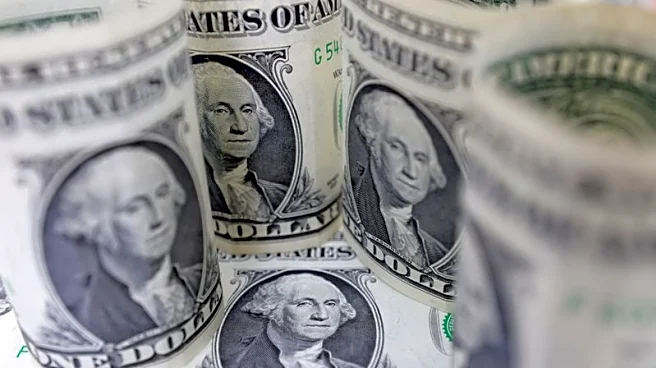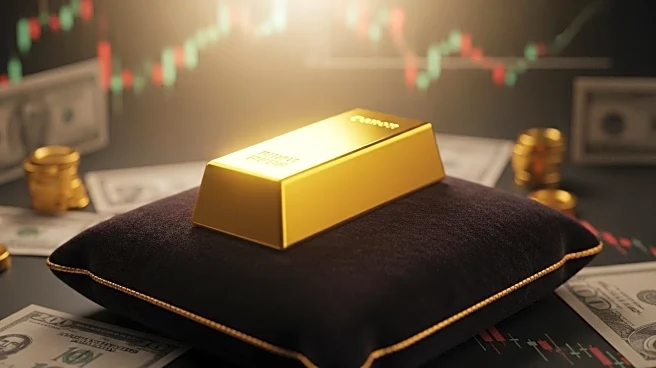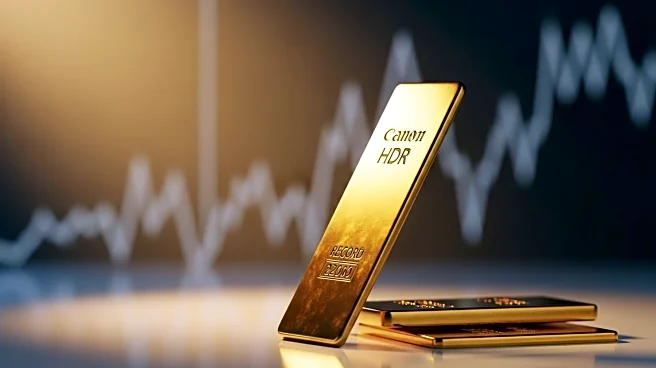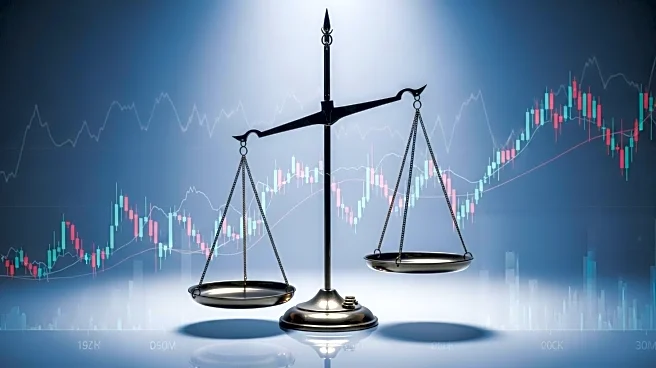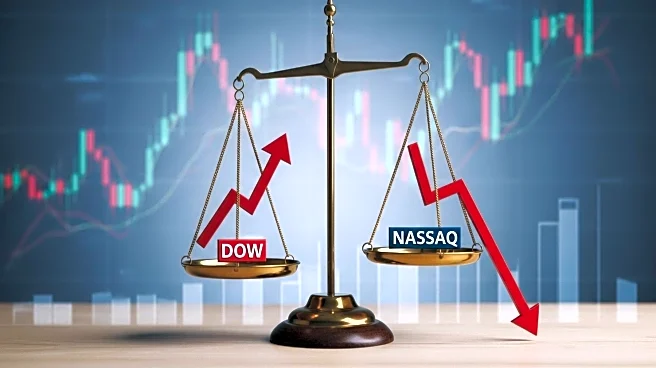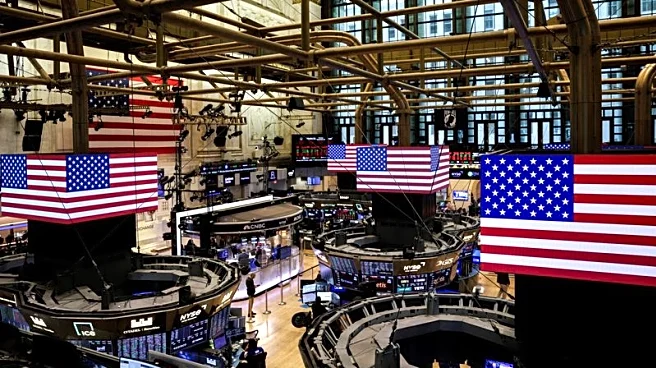What is the story about?
What's Happening?
Gold prices have reached a record high, surpassing $4,100 per ounce, driven by expectations of a U.S. Federal Reserve rate cut and renewed trade tensions between the United States and China. Spot gold increased by 0.5% to $4,129.16 per ounce, following a peak of $4,179.48 earlier in the session. U.S. gold futures for December delivery also rose by 0.4% to $4,147.10. The surge in gold prices, which have increased by 57% this year, is attributed to geopolitical and economic uncertainties, strong central bank buying, and robust exchange-traded fund inflows. Analysts suggest that further increases in gold prices may depend on dovish surprises from the upcoming Federal Open Market Committee meeting. President Trump is expected to meet Chinese leader Xi Jinping in South Korea later this month, as trade negotiations between the two countries continue.
Why It's Important?
The rise in gold prices reflects broader economic and geopolitical uncertainties, impacting investors and financial markets. As a safe-haven asset, gold tends to perform well during periods of economic instability and low interest rates. The potential rate cut by the Federal Reserve could further influence gold prices, affecting investment strategies and market dynamics. The ongoing trade tensions between the U.S. and China add to the uncertainty, with potential implications for global trade and economic growth. Investors and policymakers are closely monitoring these developments, as they could have significant consequences for the U.S. economy and international relations.
What's Next?
Investors are awaiting Federal Reserve Chair Jerome Powell's speech at the NABE annual meeting for insights into the central bank's monetary policy path. The Philadelphia Federal Reserve chief has indicated that rising risks to the labor market support the case for further U.S. rate cuts. These developments could influence gold prices and broader market trends. Additionally, the upcoming meeting between President Trump and Chinese leader Xi Jinping may impact trade negotiations and economic relations between the two countries, potentially affecting global markets.
Beyond the Headlines
The surge in gold prices highlights the ongoing impact of geopolitical tensions and economic policy decisions on financial markets. The situation underscores the importance of safe-haven assets in times of uncertainty and the role of central banks in shaping economic outcomes. The potential rate cut by the Federal Reserve and the trade negotiations between the U.S. and China could have long-term implications for global trade patterns and economic stability.
AI Generated Content
Do you find this article useful?



